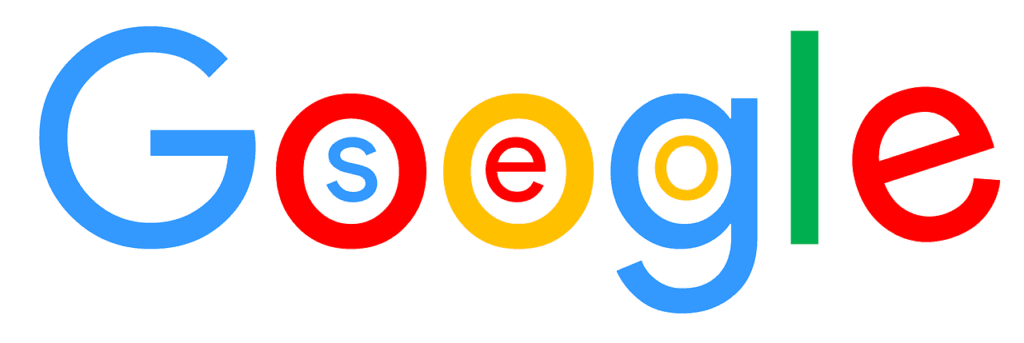Advertising propaganda are hacks used by advertisers and marketers to influence customers and clients in making decisions that help push sales. The way they do this is by shaping the opinions of individuals with the help of advertisement. Advertising Propaganda aids in effective sales and marketing of the product by attracting and enthralling the buyers, targeting selected areas of cognitive psychology.
- Why do Advertisers Use Advertising Propaganda?
- Types of Advertising Propaganda
- #2. Name-calling Propaganda
- #3. Card-Stacking Propaganda
- #4. Prejudice Appeal Propaganda
- #5. Bandwagon Propaganda
- #6. Authority Appeals Propaganda
- #7. Transfer Propaganda in Advertising
- #8. Stereotyping in Advertising Propaganda
- #9. Glittering Generalities Propaganda
- #10. Ad Nauseam Propaganda
- #11. Advertising Propaganda using Fear to Appeal to Consumers
- #12. Plain Folks Propaganda
- #13. Foot In The Door (FITD) Propaganda
- #14. Inevitable Victory Propaganda
- #15. Join The Crowd Advertising Propaganda
- #2. Name-calling Propaganda
- Wrapping It Up
Why do Advertisers Use Advertising Propaganda?
The purpose of all advertising is to persuade people to buy, but different types of ads use different techniques. For example, a magazine ad might show a picture of the product and tell you what it can do for you. A direct mail piece might offer you a discount on your next purchase if you act now. And an email ad might send you links to special offers or discounts.
Advertisers use different types of propaganda in their ads because they want us to change our attitudes and beliefs so that we’ll buy their products more often or at higher prices than we would otherwise.
Like it’s important to maintain the product quality, it is also important to plan your business strategies and know the correct ways to spread a word. They also want us to believe that what they’re selling is good for us or even necessary for our survival if we want to be happy and successful people in life!
Understanding the impact of your advertising propaganda requires deep insights into market trends and competitor strategies. Semrush offers comprehensive SEO, content marketing, competitor analysis, and PPC tools that can help advertisers gauge the effectiveness of their campaigns and refine their strategies for maximum impact.
Differentiation Between Advertising and Propaganda
The distinction between advertising and propaganda is a subtle yet profound one, hinging on the intent behind the message and the outcomes sought. Advertising, in its essence, is designed to promote a product, service, or brand, aiming to influence consumer choices and behaviors towards a commercial end. Its core objective is to inform, persuade, and remind consumers about the benefits of a purchase, operating within the realm of commercial transactions.
Propaganda, on the other hand, extends beyond the commercial sphere, often associated with political, social, or ideological agendas. Its primary goal is to shape public opinion, influence societal norms, and drive collective action towards a particular viewpoint or cause. While advertising seeks to create a favorable disposition towards a product or brand, propaganda aims to mold perceptions and attitudes on a broader scale.
This distinction is crucial for consumers to understand, as it empowers them to critically evaluate the messages they encounter, discerning between those that seek to influence their purchasing decisions and those aiming to sway their beliefs and values.
Impact on Consumer Behavior and Society

The impact of propaganda on consumer behavior and society is profound and far-reaching, influencing not just individual choices but also shaping societal norms and values. Through targeted messaging and emotional appeals, propaganda can significantly alter consumer perceptions, driving trends and creating demand where none existed.
Beyond the marketplace, propaganda has the power to influence political opinions, cultural attitudes, and social behaviors, often serving as a tool for both positive change and manipulative control. The role of advertising as a form of propaganda becomes especially pertinent in this context, as it blurs the lines between commercial persuasion and sociocultural influence.
By understanding the mechanisms through which propaganda affects consumer behavior and societal norms, individuals can become more discerning consumers and citizens, capable of navigating the complex web of messages that shape our world.
Historical Context and Evolution of Propaganda in Advertising
The lineage of propaganda in advertising traces back to ancient civilizations, where rhetoric and oratory were utilized to influence public opinion and commerce. This ancient craft evolved dramatically with the advent of the printing press in the 15th century, ushering in a new era of mass communication.
Propaganda, initially rooted in political and wartime efforts, seamlessly integrated into the commercial domain, exploiting the burgeoning mediums of newspapers, radios, and televisions. The 20th century marked a significant pivot as advertisers began to harness the psychological insights from figures like Sigmund Freud and Carl Jung, marrying the art of persuasion with deep-seated emotional and psychological triggers.
This evolution transformed advertising from mere product description to sophisticated narratives that tapped into collective desires and fears, thus molding consumer culture.
Today’s digital revolution further expands this domain, with social media and algorithmic targeting refining propaganda into an almost personalized dialogue between brand and consumer, making the historical evolution of propaganda in advertising a testament to the dynamic interplay between technology, psychology, and culture.
The history of advertising propaganda is not just a tale of evolving mediums, but also of deepening psychological insight. Sigmund Freud’s theories on human desires and Carl Jung’s archetypes laid early groundwork, but today’s advertisers have moved beyond mere emotional appeal to sophisticated neuromarketing. This approach uses brain-imaging and physiological tracking to understand consumer reactions beyond what they can articulate.
By analyzing how different stimuli affect the brain’s response, advertisers can tailor messages that not only capture attention but also stimulate the desired action subconsciously. This psychological evolution signifies a leap from understanding what consumers say they want to unlocking the hidden triggers influencing their decisions.
Emotional Appeals and Psychological Impact
The core of persuasive advertising lies in its ability to wield emotional appeals with surgical precision, a strategy that transcends rational persuasion and delves into the psychological impact on the audience. Emotional appeals in advertising exploit a spectrum of human feelings – from joy, fear, and surprise to sadness and anger – to forge a deeper connection with the product or service.
This psychological impact is profound, as these emotions can significantly influence memory retention, brand perception, and decision-making processes. For instance, advertisements that evoke happiness or nostalgia can engender loyalty and positive brand associations, while those that play on fear or anxiety might drive immediate action, albeit with a potential cost to brand trust.
The psychological landscape of advertising is a minefield of ethical considerations, as the line between persuasion and manipulation blurs. Advertisers, thus, must navigate this terrain with sensitivity and integrity, ensuring that emotional appeals enhance the consumer’s life rather than exploit vulnerabilities.
The successful integration of emotional appeals in advertising not only captivates the audience but also cements the brand’s position in the collective psyche, showcasing the intricate balance between art, science, and ethics in crafting impactful messages.
Beyond Basic Emotions: Leveraging Psychological Techniques in Advertising — While tapping into basic emotions forms the cornerstone of advertising propaganda, the application of nuanced psychological techniques elevates its effectiveness.
Techniques such as ‘The Scarcity Principle,’ which exploits our fear of missing out (FOMO), and ‘The Commitment and Consistency Principle,’ which leverages our desire to appear consistent in our actions and beliefs, play pivotal roles in shaping consumer behavior. Understanding these psychological underpinnings can empower advertisers to craft messages that resonate on a deeper level, making the proposition not just appealing, but nearly irresistible.
Sociocultural Influences and Targeting Strategies

The fabric of advertising propaganda is inextricably woven with sociocultural threads, reflecting and shaping the zeitgeist of its time. Advertisers adeptly tap into prevailing social norms, cultural trends, and even subcultures to craft messages that resonate deeply with specific demographics.
This targeting strategy has evolved from broad-strokes appeals to nuanced messages tailored to the unique preferences and values of distinct groups. For example, in response to growing environmental consciousness, many brands have embraced green marketing, appealing to consumers’ desire to make eco-friendly choices. Similarly, the rise of social justice movements has prompted a shift towards more inclusive and diverse representations in advertising.
This sociocultural savvy not only enhances the relevance of advertising messages but also fosters a sense of community and belonging among target audiences. The challenge for advertisers lies in staying authentically connected to these cultural currents without appropriating or misrepresenting them, thereby ensuring that their messages not only capture attention but also earn respect and loyalty.
In the age of digital media, user-generated content (UGC) has emerged as a formidable force in advertising propaganda. This approach leverages content created by customers, such as reviews, photos, videos, and social media posts, to promote products or brands. Unlike traditional advertising, UGC brings authenticity and relatability to the forefront, empowering consumers to become the brand’s ambassadors.
The persuasive power of UGC lies in its ability to tap into the social proof principle, where individuals look to others’ actions to guide their own. By showcasing real experiences and endorsements from peers, brands can foster a sense of trust and community, making the promotional message more impactful and resonant with the target audience.
Technological Advancements and Media Convergence
The trajectory of advertising propaganda has been dramatically reshaped by technological advancements and the convergence of media platforms. The digital age has introduced a plethora of new channels—social media, influencer partnerships, and programmatic advertising—each with its own set of tools for creating, targeting, and analyzing the impact of advertising messages.
This media convergence has transformed the landscape from a one-way broadcast to a multifaceted dialogue, where interaction and personalization reign supreme. Technologies such as AI and machine learning offer unprecedented insights into consumer behavior, allowing for hyper-personalized ad campaigns that can predict and respond to individual preferences in real-time.
Meanwhile, augmented reality (AR) and virtual reality (VR) present novel opportunities for immersive branding experiences that can enhance emotional engagement and brand recall. However, this rapid technological evolution also raises critical concerns about privacy, data security, and the potential for digital echo chambers.
As such, the future of advertising propaganda hinges on a delicate balance between leveraging technological innovations to enrich the consumer experience and safeguarding ethical standards and consumer trust.
Digital and Social Media Propaganda
The advent of digital and social media has revolutionized the landscape of propaganda, introducing new techniques and challenges in the dissemination of persuasive messages.
Social media platforms, with their vast reach and deep penetration into daily life, have become fertile ground for both commercial advertising and broader propaganda efforts. The role of algorithms in curating content has created echo chambers, where users are increasingly exposed to homogeneous information that reinforces existing beliefs, thereby amplifying the effects of propaganda.
The ability to target messages with unprecedented precision, based on extensive data collection and analysis, has transformed the efficacy and impact of propaganda techniques. This digital evolution requires a nuanced understanding of how messages are crafted, targeted, and received in the modern age, emphasizing the need for media literacy and critical thinking skills to navigate the complexities of digital and social media propaganda.
Types of Advertising Propaganda
Till very recently it was thought that there are only seven types of advertising propagandas. The reason behind it was the popularity in use of the seven types of advertising propagandas.
But, the new-age digital businesses have turned the tables and discovered eight new advertising propaganda tactics that have proven their effectiveness in real world tests.
The 15 types of propagandas used in advertising which are discussed below are:
- 1. Persuasive
- 2. Name-calling
- 3. Card-Stacking Propaganda
- 4. Prejudice Appeal
- 5. Bandwagon
- 6. Authority Appeals
- 7. Transfer
- 8. Stereotyping
- 9. Glittering Generalities
- 10. Ad Nauseam
- 11. Fear Appeals
- 12. Plain Folks
- 13. Foot In The Door
- 14. Inevitable Victory
- 15. Join The Crowd
#1. Persuasive Propaganda
Persuasive propaganda in advertising is a tactic used by companies to influence consumers to purchase their products or services by presenting them in a favorable light and appealing to emotions or desires. This type of propaganda often uses emotionally charged language, images, and appeals to the audience’s needs or wants in order to create a positive association with the product or service.
Examples of Persuasive Propaganda in Advertising
- A cleaning product company using the slogan “a clean home is a happy home” to appeal to the audience’s desire for a happy and organized home.
- A car company using images of families smiling and enjoying their car on a road trip to appeal to the audience’s desire for adventure and quality family time.
- A fitness company using testimonials from customers who have achieved their fitness goals and improved their health using the company’s products to appeal to the audience’s desire for health and wellness.
- A beauty product company using before and after images of customers who have used their products to improve their appearance to appeal to the audience’s desire for beauty and self-improvement.
- A food company using images of delicious, mouth-watering meals made with their products to appeal to the audience’s desire for delicious and satisfying food.
For businesses looking to craft persuasive advertising campaigns that resonate with their audience, HubSpot offers a comprehensive suite of marketing tools. With its advanced CRM and marketing automation features, HubSpot helps you personalize your messaging to meet the unique needs and desires of your audience, ensuring your persuasive propaganda hits the mark every time.
Real Life Example
Apple’s marketing campaigns often use persuasive propaganda by highlighting the innovative features of their products, emphasizing how they can improve the user’s life, making it seem essential to own an Apple product for a modern, efficient lifestyle.
#2. Name-calling Propaganda
Name-calling propaganda is a type of propaganda that involves using derogatory language to attack or demean an individual or group. This tactic is often used to create negative associations with a person or group in order to make them seem less credible or likable. It is a common tactic used in political campaigns and can be seen in advertisements, speeches, and other forms of media.
Name calling propaganda is a tactic used to manipulate an audience by labeling a person or group with a derogatory or negative term in order to create a negative association in the minds of the audience. This tactic is often used to make the target appear inferior or undesirable, and to create division and hatred among the audience.
How Name-Calling Propaganda can be used for Your Advertising Campaign
- A cigarette company using the slogan “real men smoke X brand” to imply that those who do not smoke their brand are not masculine.
- A car company using the term “greenies” to refer to environmentally conscious consumers in order to make them seem weak or naïve.
- A beauty product company using the term “wrinkly” to describe those who do not use their anti-aging cream, in order to create a sense of shame and desire to purchase their product.
- A fast food chain using the term “health nuts” to refer to those who choose healthy options, in order to make them appear uptight or extreme.
- A clothing brand using the term “basic” to describe those who do not wear their brand, in order to make them appear unoriginal and uninteresting.
Real Life Example
Political campaigns frequently use name-calling propaganda, where one candidate might label their opponent with an unflattering nickname to create negative associations, like calling a candidate “Slow Joe” to imply lack of efficiency or capability.
#3. Card-Stacking Propaganda
There are a lot of ways to manipulate your audience. One of the easiest is to use card stacking, or the practice of making one point that’s supposed to be good for you and would sound like it’s also good for everyone else. Card stacking is a common advertising technique, used in commercials and print ads all the time. It can be very subtle or very blatant, but it’s always there.
So instead of saying “Our product is better than our competitor’s,” they say “Our product is better than our competitor’s and it costs less.”
Here, the second statement isn’t true — at least not always. But if you’re trying to advertise something that isn’t generally accepted as being better than its competitor, it can make all the difference in how successful your marketing campaigns and/or your advertisement will be.
An Insight on How You Can use this form of Advertising Propaganda for Your Business
- A car company only featuring customer reviews that rave about the car’s performance and safety features, while withholding any negative feedback or complaints.
- A beauty product company only showing before and after images of customers who have had significant results from using their product, while ignoring any customers who did not see the same results.
- A weight loss supplement company only featuring testimonials from customers who have lost significant amounts of weight using their product, while ignoring any customers who did not see the same results or experienced negative side effects.
- A food company comparing their product to a lower-quality alternative in order to make their product appear superior, while ignoring any potential drawbacks or drawbacks of their own product.
- A cleaning product company only highlighting the benefits of their product, such as its effectiveness and natural ingredients, while downplaying any potential drawbacks or negative impacts on the environment.
Real Life Example
Pharmaceutical ads often list a drug’s benefits in detail while minimizing or quickly glossing over potential side effects, making the product seem more appealing by stacking the deck in favor of positive attributes.
#4. Prejudice Appeal Propaganda
Prejudice is a strong feeling of dislike, or a preconceived judgment, usually against someone or something regarded as different. The term prejudice is often used to describe an attitude based on implicit or explicit stereotypes. In this sense, it is more commonly applied to the personal than the social level.
Prejudice appeal propaganda in advertising is a tactic used to manipulate an audience by appealing to their existing biases and prejudices in order to persuade them to buy a product or service. This tactic often involves using stereotypes, generalizations, or scapegoating to create an association between the product or service and a particular group of people, and to make the audience feel superior to or better than that group.
Examples of how Businesses use this Tactic
- A car company using images of rugged, masculine men to sell their trucks, implying that only real men drive trucks.
- A beauty product company using images of thin, white women to sell their products, implying that only thin, white women are beautiful.
- A fast food chain using patriotic imagery and language to sell their burgers, implying that only true Americans eat their burgers.
- A cleaning product company using fear of germs and illness to sell their disinfectant spray, implying that only their product can protect you and your family from germs.
- A clothing company using images of wealthy, successful people to sell their products, implying that only wealthy, successful people can afford and wear their clothes.
Real Life Example
Luxury car brands, such as Mercedes-Benz or BMW, often use prejudice appeal by associating their cars with high social status, implicitly suggesting that owning their car signifies wealth and success.
#5. Bandwagon Propaganda
The bandwagon propaganda technique uses the bandwagon effect to create a positive attitude toward a certain idea, group, or cause. The bandwagon effect is the tendency for people to do things because many other people are doing it. Bandwagon propaganda takes advantage of this by portraying an idea as popular or fashionable.
The bandwagon propaganda technique can be used by companies selling products and services but also by political parties who want people to vote for them or join their cause. It’s often used when someone feels uncertain about what to do or how best to proceed.
Bandwagon Propaganda in Action
- A car company using the slogan “join the millions of satisfied customers” to create a sense of exclusivity and popularity for their product.
- A beauty product company using images of celebrities and influencers using their products to create a sense of trendiness and popularity.
- A fast food chain using the phrase “be part of the movement” to create a sense of belonging and exclusivity for those who eat at their restaurants.
- A cleaning product company using the phrase “limited time offer” to create a sense of urgency and scarcity for their product.
- A clothing brand using images of large crowds wearing their clothes at events or festivals to create a sense of popularity and trendiness.
Real Life Example
Social media campaigns that encourage users to join in on a challenge or trend rely on bandwagon propaganda, suggesting that since everyone else is participating, you should too. An example is the Ice Bucket Challenge for ALS awareness.
#6. Authority Appeals Propaganda
Authority appeals are a sub-category of social proof. They are persuasive messages that appeal to the authority of an expert or an authority figure. Authority appeals are commonly used in advertising, where they are sometimes referred to as “testimonials.” They involve using someone or something with perceived authority to make an argument seem more valid or believable than it really is.
B2B businesses often use this tactic to get more leads and improve their brand awareness.
How You Can Use Authority for Your Advertising Campaigns
- A car company using endorsements from professional race car drivers to sell their sports cars, implying that only professional race car drivers know the value of a good car.
- A beauty product company using endorsements from dermatologists to sell their skincare products, implying that only dermatologists know the best way to take care of your skin.
- A fast food chain using endorsements from nutritionists to sell their healthy meal options, implying that only nutritionists know the best way to eat healthy.
- A cleaning product company using endorsements from housekeeping experts to sell their cleaning products, implying that only housekeeping experts know the best way to clean your home.
- A clothing brand using endorsements from fashion designers to sell their clothing, implying that only fashion designers know the best way to dress.
Real Life Example
Toothpaste commercials that claim “9 out of 10 dentists recommend” their brand use authority appeals by leveraging the credibility of professionals to persuade consumers.
#7. Transfer Propaganda in Advertising
Transfer propaganda is a form of propaganda that seeks to transfer emotions from one person or group to another.
Transfer propaganda is used for two main purposes: To create a positive association between two people, groups or ideas, or to create a negative association between two people, groups or ideas.
The transfer propaganda of advertising is often used to encourage people to associate positive feelings when buying a particular product or service and associating negative feelings with buying from competitors. Advertisers may also use the transfer appeal, which is a type of appeal that involves creating an association between your product and something desirable or attractive.
The purpose of this type of advertising is to make people associate positive feelings with your product or service and then transfer those feelings onto your brand or company. The opposite effect can happen as well: If you have an unpleasant association with a product, then this will affect how you feel about it even if there’s no logical reason for it.
Examples of this Advertising Propaganda:
- A car company using images of the American flag and patriotic music in their advertisements to sell their cars, implying that buying their cars is a patriotic act.
- A beauty product company using images of happy, smiling women in their advertisements to sell their makeup, implying that using their makeup will make women happy and beautiful.
- A fast food chain using images of happy families enjoying their food in their advertisements to sell their meals, implying that eating their food will create happy memories with loved ones.
- A cleaning product company using images of sparkling clean homes and the smell of fresh flowers in their advertisements to sell their products, implying that using their products will create a fresh and inviting home.
- A clothing brand using images of successful, fashionable people in their advertisements to sell their clothing, implying that wearing their clothing will make people successful and fashionable.
How to Effectively Use Transfer Propagranda
Enhancing Transfer Propaganda with Storytelling:
Leveraging Storytelling to Amplify Transfer Propaganda — One effective way to deepen the impact of transfer propaganda is through the art of storytelling. Crafting narratives around your product or service that align with desirable lifestyles, ideals, or emotions can create a more profound connection with your audience. For instance, narrating the journey of a customer whose life was transformed by using your product not only showcases its benefits but also embeds your brand within a desirable narrative context.
Start by identifying core values that resonate with your target audience. Then, weave stories around real or hypothetical customers who embody these values, thanks to your product or service. Use various media formats — videos, blogs, social media posts — to share these stories, ensuring they are relatable and evoke the emotions or associations you want to transfer to your brand.
Incorporating User-Generated Content in Transfer Propaganda:
Empowering Your Audience: UGC’s Role in Transfer Propaganda — User-generated content (UGC) is a goldmine for enhancing transfer propaganda. Encouraging your customers to share their own stories, photos, and videos using your product or service not only provides authentic testimonials but also facilitates the transfer of positive associations from your satisfied customers to potential buyers.
Create a campaign that incentivizes your customers to share their experiences with your product. This could be a contest, a hashtag campaign, or a feature on your website. Showcase these user stories prominently where your prospective customers can see them, such as on your social media platforms, website, or in your email newsletters. Make sure to engage with this content by liking, commenting, and sharing, to further validate these positive associations.
Utilizing Influencers to Strengthen Transfer Propaganda:
The Power of Influence: Collaborating with Influencers for Enhanced Transfer — Collaborating with influencers who align with your brand’s values can significantly amplify the effects of transfer propaganda. Influencers already have the trust and admiration of their followers, and by associating your brand with these influencers, you can transfer these positive sentiments to your products or services.
Identify influencers whose personal brand and audience demographics align with your target market. Develop partnerships where these influencers can share their genuine experiences with your product. This could range from sponsored posts and stories to full-fledged product reviews or even co-created content. The key is authenticity — the influencer’s content should resonate as true to their style and genuine in their endorsement.
Creating a Consistent Brand Image:
Cohesion and Consistency: Solidifying Transfer Propaganda Through Brand Image — A consistent and cohesive brand image across all platforms and materials reinforces the positive associations you aim to transfer. Every touchpoint with your brand should evoke the same feelings and values, strengthening the desired connections in the minds of your consumers.
Audit your brand’s presence across all channels, including your website, social media, packaging, and advertising materials. Ensure that your brand’s visual identity (colors, logos, typefaces) and tone of voice are consistent throughout. This uniformity makes your brand instantly recognizable and reinforces the positive associations you’re cultivating through transfer propaganda.
Real Life Example
Coca-Cola’s holiday campaigns often feature warm, family-oriented scenes or use images of Santa Claus, transferring feelings of joy, nostalgia, and family closeness to their brand.
#8. Stereotyping in Advertising Propaganda
Stereotypes are generalizations about a population based on their membership in a social group. They can be positive or negative, but they’re always broad generalizations — like all Americans are friendly or all Germans are efficient — that don’t capture the full range of human diversity.
Stereotypes play an important role in advertising as they allow advertisers to simplify complex messages into easily digestible sound bites that resonate with consumers’ expectations. They also help advertisers target specific groups within large populations.
How this Tactic looks when put in Action
- A car company using images of rugged, masculine men to sell their trucks, implying that only masculine men drive trucks.
- A beauty product company using images of thin, white women to sell their products, implying that only thin, white women are beautiful.
- A fast food chain using images of happy, diverse families to sell their meals, implying that their food is enjoyed by all types of families.
- A cleaning product company using images of perfection and order to sell their products, implying that only those who use their products have perfectly clean and organized homes.
- A clothing brand using images of wealthy, successful people to sell their products, implying that only wealthy, successful people can afford and wear their clothes.
Real Life Example
Fast food ads that portray their meals as the perfect choice for busy, on-the-go families stereotype their target audience’s lifestyle, suggesting their product is the logical fit for such a hectic life.
#9. Glittering Generalities Propaganda
Glittering generalities are a type of propaganda that is often used in political speeches. The term was coined by Walter Lippmann, a prominent journalist and political theorist at the time. It refers to words that have a positive connotation, but lack any substance or meaning.
Advertisers use glittering generalities when their product does not stand out from competitors or when the price is too high for most consumers to afford it. Glittering generalities allow marketers to create an emotional connection with potential customers so that they will want to purchase the product even if it does not fulfill their needs completely or is not the best choice for them.
Examples of how this Advertising Propaganda is Used
- A car company using the slogan “the ultimate driving experience” to sell their sports cars, without providing any specific details or evidence of what makes their cars superior.
- A beauty product company using the phrase “the secret to beautiful skin” to sell their skincare products, without providing any specific details or evidence of how their products work.
- A fast food chain using the phrase “the taste of America” to sell their burgers, without providing any specific details or evidence of how their burgers are different from others.
- A cleaning product company using the phrase “the secret to a clean home” to sell their products, without providing any specific details or evidence of their effectiveness.
- A clothing brand using the phrase “the key to success” to sell their suits, without providing any specific details or evidence of how their suits are different from others.
Real Life Example
Beauty products using vague but positive phrases like “unlock your inner beauty” or “the secret to flawless skin” employ glittering generalities to appeal to wide audiences without making specific, verifiable claims.
#10. Ad Nauseam Propaganda

Ad Nauseam is a form of advertising that uses repetition to influence consumers into buying a particular product. It uses a variety of techniques to achieve this goal, including:
Repeating a word or phrase until it becomes part of our everyday language or the same message over and over again in different forms (television commercials, print ads, billboards) or using catchy slogans or jingles that are designed to get stuck in your head.
How Ad Nauseam Propaganda can be Implemented
- A car company constantly airing the same advertisement for their sports cars on every television channel, in order to saturate the market and make their product appear popular and desirable.
- A beauty product company constantly posting the same advertisement for their skincare products on social media, in order to saturate the market and make their product appear popular and desirable.
- A fast food chain constantly running the same advertisement for their burgers on billboards and buses, in order to saturate the market and make their product appear popular and desirable.
- A cleaning product company constantly sending out the same advertisement for their products in the mail, in order to saturate the market and make their product appear popular and desirable.
- A clothing brand constantly running the same advertisement for their clothing on fashion blogs and websites, in order to saturate the market and make their product appear popular and desirable.
HubSpot’s email marketing and automation platform can take your Ad Nauseam propaganda efforts to the next level. By automating repetitive messages across email campaigns while still personalizing them to your audience, you can ensure your brand remains top-of-mind without overwhelming your prospects.
Real Life Example
The repeated airplay of a catchy jingle or slogan in commercials, like McDonald’s “I’m Lovin’ It,” uses ad nauseam tactics to embed the product in the consumer’s memory through constant repetition.
#11. Advertising Propaganda using Fear to Appeal to Consumers
Fear-based propaganda is a form of advertising that uses fear as its primary persuasive technique. Fear is an effective tool because it’s an instinctual response to danger. The brain automatically responds to fear with an increased heart rate, faster breathing, sweating and increased blood flow to the muscles. These changes prepare us to fight or flee from danger.
Fear appeals are not new, but they’ve grown increasingly more common as technology has made it easier for advertisers to create more vivid images for their ads. While this can be effective when done well, it can also backfire if used inappropriately.
Examples of this Form of Advertising
- A car company using images of car accidents and statistics about the importance of car safety in their advertisements to sell their cars, implying that only their cars are safe and that not buying their cars puts you at risk of an accident.
- A beauty product company using images of aging and wrinkles in their advertisements to sell their anti-aging cream, implying that only their cream can prevent wrinkles and that not using their cream will make you look old.
- A fast food chain using images of unhealthy, overweight people in their advertisements to sell their healthy meal options, implying that only their healthy options can prevent obesity and that not eating their healthy options will make you unhealthy and overweight.
- A cleaning product company using images of dirty homes and the spread of germs in their advertisements to sell their disinfectant spray, implying that only their spray can prevent the spread of germs and that not using their spray will make your home dirty and unhealthy.
- A clothing brand using images of people being judged and ridiculed for their fashion choices in their advertisements to sell their clothing, implying that only their clothing is fashionable and that not wearing their clothing will make you the subject of ridicule.
Real Life Example
Home security companies, such as ADT, use fear appeals by depicting scenarios of burglaries and break-ins, suggesting that without their product, the consumer’s home and family are at risk.
#12. Plain Folks Propaganda
The Plain Folks Propaganda in advertising can be seen in many different ways, including through the use of actors, celebrities, models and other people who are not real consumers of the product being advertised. This helps to make the ad seem more believable and trustworthy because it makes it seem like these people are real consumers who have used this product before and like it very much!
This tactic taps into the people factor of the marketing 3Ps to increase its effectiveness.
Plain Folks Propaganda in Action
- A car company using images of regular people driving their cars in everyday situations in their advertisements to sell their cars, implying that their cars are suitable for everyday use and that regular people can afford and enjoy them.
- A beauty product company using images of regular people using their products in their advertisements to sell their skincare products, implying that their products are suitable for everyday use and that regular people can afford and enjoy them.
- A fast food chain using images of regular people enjoying their food in their advertisements to sell their meals, implying that their food is suitable for everyday use and that regular people can afford and enjoy it.
- A cleaning product company using images of regular people using their products to clean their homes in their advertisements to sell their products, implying that their products are suitable for everyday use and that regular people can afford and enjoy them.
- A clothing brand using images of regular people wearing their clothing in everyday situations in their advertisements to sell their clothing, implying that their clothing is suitable for everyday use and that regular people can afford and enjoy it.
Real Life Example
Politicians often use plain folks propaganda by engaging in everyday activities or discussing their humble beginnings in campaign ads to appear relatable to the average voter.
#13. Foot In The Door (FITD) Propaganda
FITD is a kind of propaganda that is used in advertising. It is also known as foot-in-the-door technique or door-in-the-face technique.
The main idea behind FITD is to get people to agree initially with a small request and then later use this agreement as leverage to make them agree with a larger request. In advertising, FITD is used by advertisers to accomplish several goals such as getting people to buy their products and services, spread awareness about some issue, etc.
Examples:
- A car company offering a free test drive of their sports car to potential customers, using the initial positive experience of driving the car to persuade them to buy it.
- A beauty product company offering a free sample of their skincare products to potential customers, using the initial positive experience of using the products to persuade them to buy the full-sized products.
- A fast food chain offering a discount on their healthy meal options to potential customers, using the initial positive experience of eating their healthy meals to persuade them to continue buying them.
- A cleaning product company offering a free trial of their disinfectant spray to potential customers, using the initial positive experience of using the spray to persuade them to buy the full-sized product.
- A clothing brand offering a discount on their clothing to potential customers, using the initial positive experience of wearing their clothing to persuade them to continue buying from them.
Implementing the Foot In The Door technique requires keeping track of initial small agreements and gradually escalating them. FreshSales, a sales management tool, excels at this by allowing you to monitor customer interactions and follow-ups meticulously, ensuring no opportunity for escalation is missed in your advertising efforts.
Real Life Example
Free trials or sample products are examples of FITD propaganda, where companies bet on once you try their product for free, you’ll be more likely to make a purchase.
#14. Inevitable Victory Propaganda
Inevitable victory propaganda in advertising is a tactic used to manipulate an audience by creating the impression that the product or service being advertised is already successful and widely accepted, and that it is only a matter of time before everyone uses it.
This tactic often involves using language and imagery that implies that the product or service is already popular, successful, or superior, and that it is only a matter of time before everyone realizes this and starts using it. Although this is a tactic to lure in clients and customers, you should not personally believe in the talk behind this advertising strategy, or else it may lead to marketing myopia.
How this Advertising Propaganda Strategy is Applied
- A car company using the slogan “the future of driving” to sell their electric cars, implying that their cars are the future and that only their cars are advanced and modern.
- A beauty product company using the phrase “the next big thing in skincare” to sell their products, implying that their products are the next big thing and that only their products are innovative and effective.
- A fast food chain using the phrase “the future of fast food” to sell their healthy meal options, implying that their healthy options are the future and that only their options are healthy and sustainable.
- A cleaning product company using the phrase “the next big thing in cleaning” to sell their products, implying that their products are the next big thing and that only their products are effective and efficient.
- A clothing brand using the phrase “the future of fashion” to sell their clothing, implying that their clothing is the future and that only their clothing is fashionable and trendy.
Creating a sense of inevitable victory in your marketing funnel can significantly increase conversions. ClickFunnels simplifies the process of building customized sales funnels that guide your prospects through a journey, from awareness to the inevitable decision to purchase, aligning perfectly with the concept of inevitable victory.
Real Life Example
Tech companies announcing pre-orders for a new gadget imply that it’s going to be the next big thing, suggesting that its success (and your participation) is inevitable.
#15. Join The Crowd Advertising Propaganda
Join the crowd propaganda in advertising is a tactic used to manipulate an audience by creating the impression that the product or service being advertised is already popular and widely accepted, and that by using it the audience will be joining the “in” crowd and be part of a movement or trend.
This tactic often involves using language and imagery that implies that the product or service is already popular and successful, and that by using it the audience will be part of a larger group of satisfied customers or trendsetters.
The key to this strategy is to create an image that represents a group of people who support your product or brand. This could be as simple as adding a hashtag to your adverts, or creating a strong visual representation of the crowd that supports your product. Influencer marketing, conducting giveaways on Instagram works best to support this form of advertising propaganda.
Putting this Advertising Tactic in Action
- A car company using the slogan “everyone is driving our cars” to sell their cars, implying that their cars are already popular and that by buying one the audience will be part of a larger group of satisfied customers.
- A beauty product company using the phrase “join the skincare movement” to sell their products, implying that their products are already popular and that by using them the audience will be part of a larger group of trendsetters.
- A fast food chain using the phrase “everyone is eating our food” to sell their meals, implying that their food is already popular and that by eating it the audience will be part of a larger group of satisfied customers.
- A cleaning product company using the phrase “everyone is using our products” to sell their products, implying that their products are already popular and that by using them the audience will be part of a larger group of satisfied customers.
- A clothing brand using the phrase “everyone is wearing our clothes” to sell their clothing, implying that their clothing is already popular and that by wearing it the audience will be part of a larger group of trendsetters.
To effectively leverage ‘Join The Crowd’ propaganda in your social media campaigns, a tool like Social Pilot can be incredibly beneficial. It allows you to schedule and publish content that resonates with your audience, encouraging them to join the movement your brand is creating. Its analytics also help you understand what truly engages your audience.
Real Life Example
Nike’s “Just Do It” campaigns often feature athletes from various sports, suggesting that by wearing Nike, you join the ranks of these successful athletes.
Ethical Considerations and Consumer Protection
The potency of advertising propaganda, amplified by sophisticated targeting and psychological tactics, places a spotlight on ethical considerations and the imperative for consumer protection. As the boundary between persuasive marketing and manipulative tactics becomes increasingly blurred, the responsibility on advertisers to uphold ethical standards has never been more critical.
Ethical advertising respects the autonomy and dignity of consumers, avoiding misleading claims, respecting privacy, and refraining from exploiting vulnerabilities. This ethical compass is essential in building long-term brand trust and loyalty.
Moreover, regulatory bodies and industry standards play a crucial role in safeguarding consumer interests, ensuring that advertising practices do not overstep moral boundaries. Transparency in data usage, honesty in product claims, and sensitivity to societal impacts are foundational pillars that protect consumers from potential harms of advertising propaganda.
Adhering to these ethical guidelines not only fosters a healthier marketplace but also contributes to the societal good, reinforcing the notion that ethical advertising is indeed effective advertising.
Future Trends and Predictions in Advertising Propaganda
Looking towards the horizon, the future of advertising propaganda is poised at the intersection of technological innovation and ethical stewardship. Predictive analytics and AI are set to further refine targeting capabilities, making advertisements more personalized and effective.
Yet, as the digital landscape evolves, so too will the sophistication of ad-blocking technologies and consumer skepticism, challenging advertisers to find new ways to engage audiences authentically.
We may also witness a resurgence in traditional and nostalgia-driven advertising as consumers seek refuge from the digital overload. Additionally, the rise of the ethical consumer will demand greater transparency and corporate social responsibility in advertising messages, pushing brands to align more closely with social and environmental causes.
In the realm of regulation, expect tighter controls on data privacy and online advertising, as policymakers respond to growing concerns over digital ethics. Ultimately, the future of advertising will hinge on a delicate balance: leveraging technological advancements to create meaningful, personalized brand experiences while maintaining an unwavering commitment to ethical practices and consumer trust.
Wrapping It Up
You now know how to put these principles into practice. You understand the importance of placement, how to properly create a message, and how to create an emotional bond in your ads. For those looking to educate their audience through informative and engaging content, Thinkific offers a platform to create and sell online courses. This can be a powerful way to use educational content as part of your advertising strategy, establishing your brand as an authority and trusted source of information.
Being successful with ad campaigns is just a matter of doing the proper research and using this knowledge in combination with your own ideas.
But even with all that in place, you need to have a solid product, with a solid business foundation behind it that has a tried and tested business plan, a solid business model and a revenue model that works. Check our companion resources for more information on it.
Need help with your business growth? Send us an email at adhip[at]winsavvy.com or book a meeting for free here!
Companion Resources:
Read Next:
- Effective Email Outreach on Steroids
- 25 Ways to Get Faster Views on Instagram Reels
- Agile CRM Review: Should You Use it?
Author Bio: Isha Mudgal is part of WinSavvy’s editorial team. She hails from a tech background and writes predominantly on marketing and tech. Follow her on LinkedIn.





















